Radisson Hotels is an international hotel chain headquartered in the United States. A division of the Radisson Hotel Group, it operates the brands Radisson Blu, Radisson Red, Radisson Collection, Country Inn & Suites, and Park Inn by Radisson, among others.
Columbia Sussex is a privately owned hotel company based in Crestview Hills, Kentucky. The company, owned by the Yung family, owns and operates hotels in various parts of the United States. The current president and founder is William J. Yung III.

Marion Square is greenspace in downtown Charleston, South Carolina, spanning six and one half acres. The square was established as a parade ground for the state arsenal under construction on the north side of the square. It is best known as the former Citadel Green because The Citadel occupied the arsenal from 1843 until 1922, when the Citadel moved to the city's west side. Marion Square was named in honor of Francis Marion.
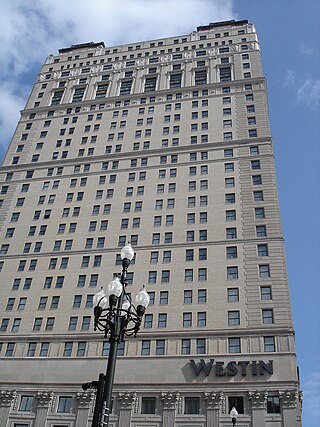
The Westin Book Cadillac Detroit is a historic skyscraper hotel in Downtown Detroit, Michigan, within the Washington Boulevard Historic District. Designed in the Neo-Renaissance style, and opened as the Book-Cadillac Hotel in 1924, the 349 ft (106 m), 31-story, 453-room hotel includes 65 exclusive luxury condominiums and penthouses on the top eight floors. It reopened in October 2008, managed by Westin Hotels, after a $200-million restoration.
Rainbow Row is the name for a series of thirteen colorful historic houses in Charleston, South Carolina. The houses are located north of Tradd St. and south of Elliott St. on East Bay Street, that is, 79 to 107 East Bay Street. The name Rainbow Row was coined after the pastel colors they were painted as they were restored in the 1930s and 1940s. It is a popular tourist attraction and is one of the most photographed parts of Charleston.
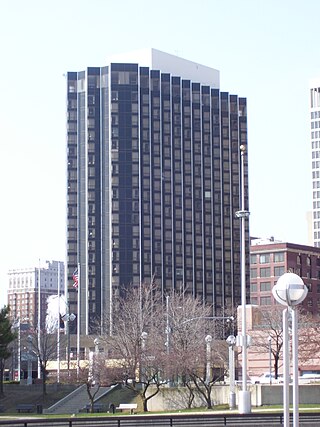
The Fort Pontchartrain a Wyndham Hotel, is a 367-room, 25-story high-rise hotel opened in 1965, adjacent to TCF Center in Downtown Detroit, Michigan.

The Hotel Niagara is a landmark hotel in Niagara Falls, Niagara County, New York. It was listed on the National Register of Historic Places in 2008.

The Westin Portland Harborview is a historic hotel in Portland, Maine, United States.
Omni Hotels & Resorts is an American privately held, international luxury hotel company based in Dallas, Texas. The company was founded in 1958 as Dunfey Hotels, and operates 50 properties in the United States, Canada, and formerly had a property in Mexico, totaling over 20,010 rooms and employing more than 23,000 people.

The Seelbach Hilton Louisville is a historic hotel in Louisville, Kentucky. Founded by Bavarian-born immigrant brothers Louis and Otto Seelbach, it opened in 1905 as The Seelbach Hotel and is designed in the French Renaissance style. The hotel has hosted numerous celebrities, including F. Scott Fitzgerald, who took inspiration from the Seelbach for a hotel in The Great Gatsby. The hotel is part of the Hilton Hotels & Resorts chain.

Acorn Corner, originally known as the Franklin Hotel or Hotel Franklin, is a six-story historic building in Kent, Ohio, United States, listed on the National Register of Historic Places since January 2013. Construction started in 1919 and the hotel opened in September 1920. The hotel was also known as the Hotel Kent and later the Hotel Kent-Ellis. Locally it is often referred to as the "old Kent hotel", "Kent Hotel", or the "old hotel". The building functioned as a hotel until the early 1970s when it was converted for use as student housing. The upper four floors were condemned in 1979, though the bottom floors housed a number of small businesses until 2000.

The Joseph Floyd Manor is a public housing facility designated for elderly and disabled citizens. It is in the upper peninsula area of Charleston, South Carolina. The building is located at 2106 Mt. Pleasant Street, on the northwest corner of Mt. Pleasant St. and King St. The 12-story building was originally known as the Darlington Apartments and was designed by William G. Lyles, Bissett, Carlisle & Wolff of Columbia, South Carolina. The facility has 156 single occupancy rooms.

The Patrick O'Donnell House is the largest example of Italianate architecture in Charleston, South Carolina. It was built for Patrick O'Donnell (1806-1882), perhaps in 1856 or 1857. Other research has suggested a construction date of 1865. Local lore has it that the three-and-a-half-story house was built for his would-be bride who later refused to marry him, giving rise to the house's popular name, "O'Donnell's Folly." Between 1907 and 1937, it was home to Josephine Pinckney; both the Charleston Poetry Society and the Society for the Preservation of Spirituals were formed at the house during her ownership.
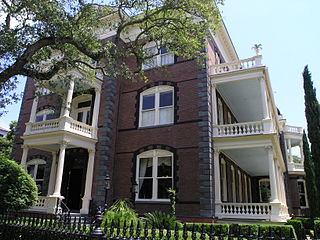
The Williams Mansion is a Victorian house at 16 Meeting St., Charleston, South Carolina. The mansion is open for public tours.
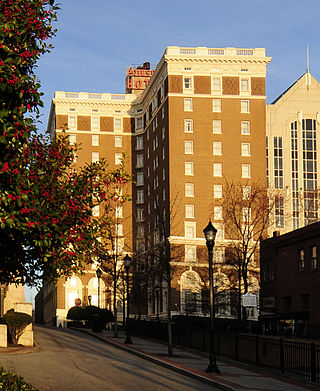
The Poinsett Hotel, or Westin Poinsett Hotel, is a twelve-story, landmark hotel in downtown Greenville, South Carolina, one of the first skyscrapers in Greenville. Named for Joel R. Poinsett, Secretary of War under President Millard Fillmore, the Poinsett replaced an earlier resort hotel, the Mansion House, built in 1824. In 1982, the Poinsett was listed on the National Register of Historic Places. The hotel is a member of Historic Hotels of America, an organization sponsored by the National Trust for Historic Preservation intended to promote heritage tourism.

The Fairmont Washington, D.C. Georgetown is a luxury Postmodernist-style hotel located at 2401 M Street NW in Washington, D.C., in the United States. The structure, in the West End neighborhood of the city, opened in December 1985 as The Westin Hotel. In December 1989, Westin sold the hotel to All Nippon Airways, which operated it as the ANA Hotel. Lowe Enterprises purchased the hotel in October 1998, and renamed it the Washington Monarch Hotel. A $12 million renovation followed in 1999. Lowe Enterprises sold the hotel to Legacy Hotels Real Estate Investment Trust in October 2002, and Legacy contracted with Fairmont Hotels and Resorts to manage the hotel. The hotel was renamed The Fairmont Washington, D.C. Legacy was itself purchased by Cadbridge Investors in July 2007 and the hotel sold to MetLife in 2014, although the property remained branded a Fairmont. A $27 million renovation was completed in January 2017.

The Westin Georgetown, Washington, D.C. is a luxury Postmodernist-style hotel located at 2350 M Street NW in the West End neighborhood of Washington, D.C., in the United States. Completed in 1984, the hotel was originally known as The Regent of Washington, D.C., but changed its name in 1985 to The Grand. After the hotel's owners were declared bankrupt in October 1994, the corporate predecessors to Starwood Hotels and Resorts Worldwide purchased the property in November 1995. Westin Hotels partnered with the new owners and rebranded the property first as The Westin Hotel in January 1996, then as The Westin Grand in 1999, and finally as The Westin Georgetown in 2010. Since 2011, The Westin Georgetown has been AAA-rated four diamonds.
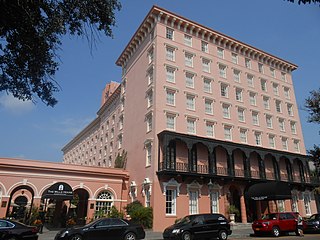
The Mills House Charleston, Curio Collection by Hilton is a historic hotel in Charleston, South Carolina, United States. It opened in 1970, but its facade is based on the original historic hotel that sat on the site from 1853 to 1968.
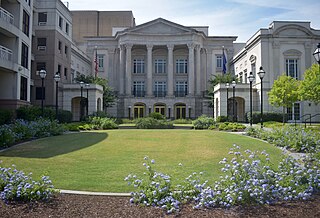
The Gaillard Center is a concert hall and performance venue in Charleston, South Carolina. It opened in 2015 and replaced the Gaillard Municipal Auditorium. Both buildings were named after John Palmer Gaillard Jr., mayor of Charleston from 1959 to 1975.

The Faber House is a historic building in Charleston, South Carolina that was listed on the National Register of Historic Places in 2019.

















